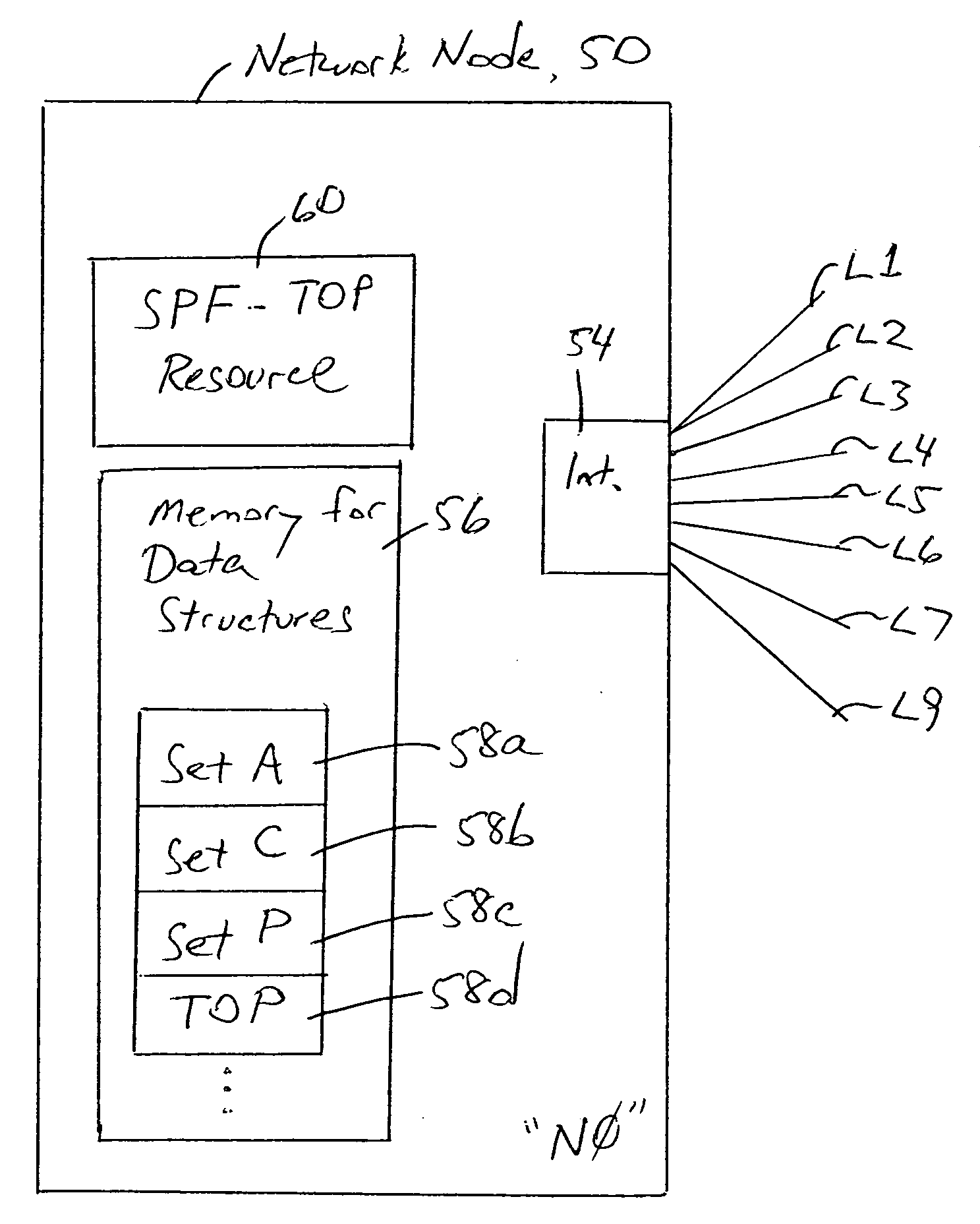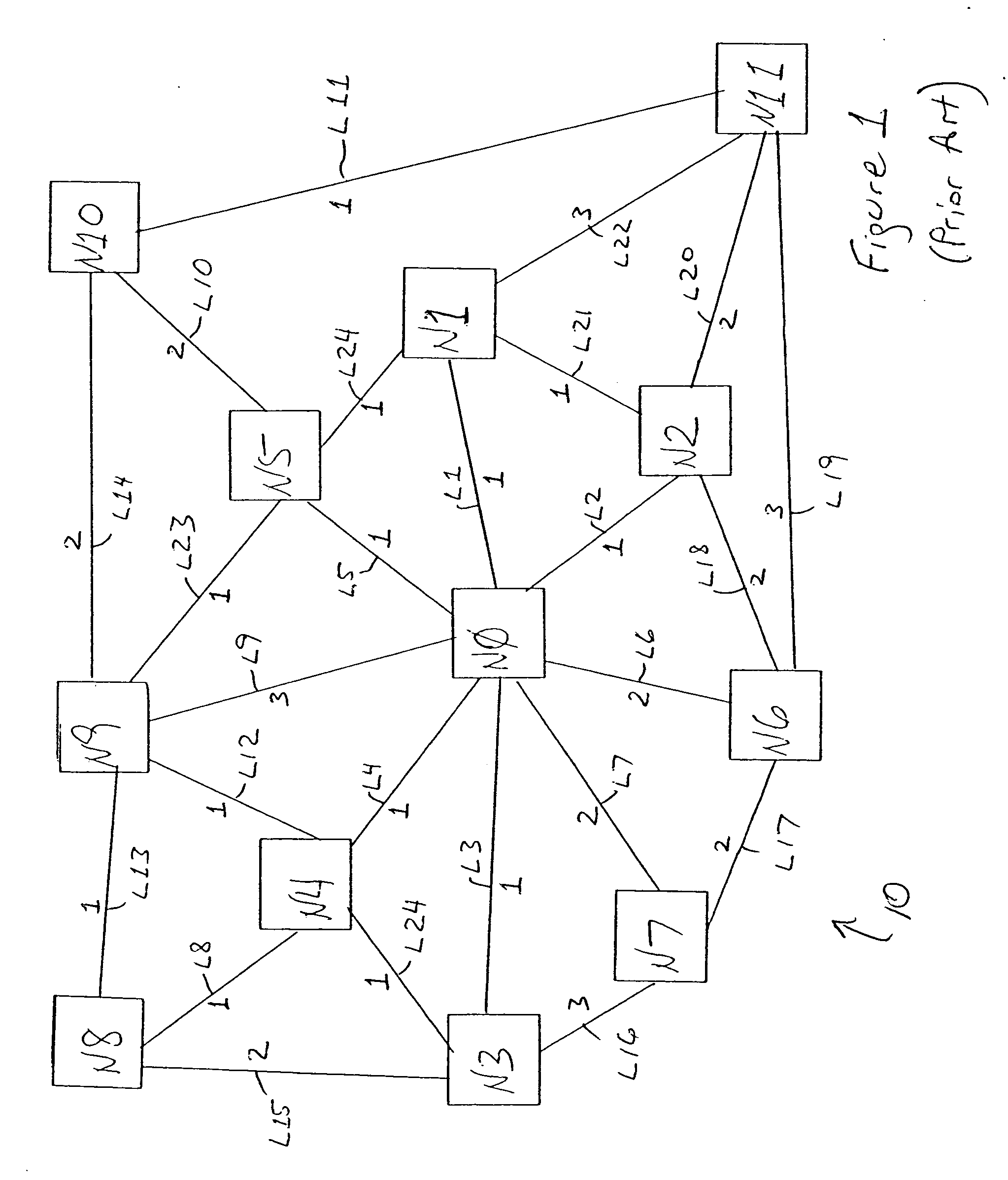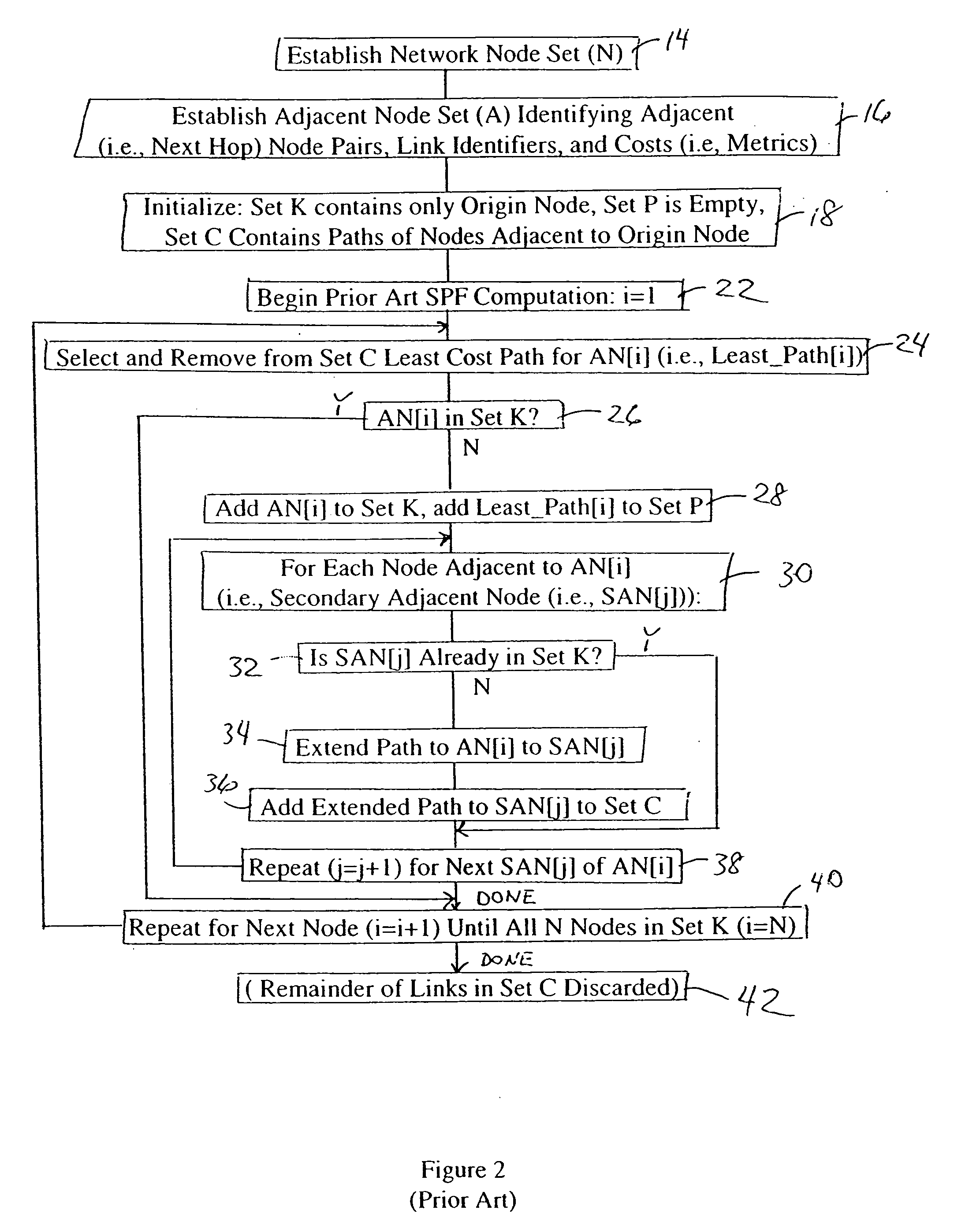Directed acyclic graph computation by orienting shortest path links and alternate path links obtained from shortest path computation
- Summary
- Abstract
- Description
- Claims
- Application Information
AI Technical Summary
Benefits of technology
Problems solved by technology
Method used
Image
Examples
Embodiment Construction
[0045]FIG. 6 is a diagram illustrating a network node 50 configured for creating a directed acyclic graph 52, illustrated in FIG. 11F, based on orienting links for the next hop paths and extended paths for the network node, according to an embodiment of the present invention. The network node 50, implemented for example as a mobile node or a mobile router configured for executing mobile protocols such as Mobile IP or MANET-based protocols including Open Shortest Path First (OSPF), includes an IP based interface 54 for sending and receiving data packets onto the network 10 of FIG. 1 via a connected link such as a wireless link. As illustrated in FIG. 6, the network node 50 is illustrated as the origin node “N0” within the mesh topology 10 of FIG. 1, hence the network node 50 is in communication with next-hop nodes N1, N2, N3, N4, N5, N6, N7, and N9 via respective links L1, L2, L3, L4, L5, L6, L7, and L9.
[0046] The network node 50 also includes a memory structure 56, for example a no...
PUM
 Login to View More
Login to View More Abstract
Description
Claims
Application Information
 Login to View More
Login to View More - R&D
- Intellectual Property
- Life Sciences
- Materials
- Tech Scout
- Unparalleled Data Quality
- Higher Quality Content
- 60% Fewer Hallucinations
Browse by: Latest US Patents, China's latest patents, Technical Efficacy Thesaurus, Application Domain, Technology Topic, Popular Technical Reports.
© 2025 PatSnap. All rights reserved.Legal|Privacy policy|Modern Slavery Act Transparency Statement|Sitemap|About US| Contact US: help@patsnap.com



